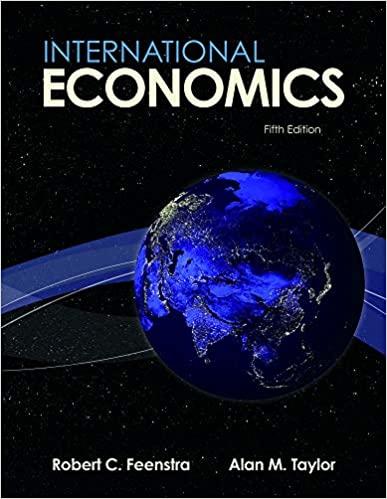Question
The Common European Asylum System (CEAS) was established by the European Union (EU) in 1999 under the Amsterdam Treaty to ensure that asylum seekers and
The Common European Asylum System (CEAS) was established by the European Union (EU) in 1999 under the Amsterdam Treaty to ensure that asylum seekers and refugees are treated fairly and consistently across Europe. The CEAS was built upon international conventions and treaties such as the Geneva Convention of 1951, the European Convention on Human Rights (ECHR), the European Social Charter, and the Community Charter of the Fundamental Social Rights of Workers.
The establishment of the CEAS marked a significant milestone in the EU's efforts to create a fair and uniform system for treating asylum seekers and refugees across Europe. The EU aimed to ensure that asylum seekers and refugees are treated humanely and with dignity. The CEAS is built on the principles of non-discrimination and equal treatment of asylum seekers and refugees, irrespective of race, religion, nationality, or gender. The same year, the EU adopted the Tampere Program, which established five directives to strengthen the CEAS. These directives included the Dublin Regulation, the Eurodac Regulation, the Reception Conditions Directive, the Qualification Directive, and the Procedures Directive.
The Dublin Regulation, adopted in 2003, determines which EU member state is responsible for examining an asylum application. The Eurodac Regulation, also adopted in 2003, created a database of fingerprints of asylum seekers and irregular border-crossers to assist in implementing the Dublin Regulation.
The Reception Conditions Directive, adopted in 2003, sets out minimum standards for the reception of asylum seekers, such as access to housing, food, and medical care. In addition, the Qualification Directive, also adopted in 2003, established the criteria for determining who qualifies as a refugee or a person needing subsidiary protection. Finally, the Procedures Directive, adopted in 2005, established standard procedures for processing asylum applications in the EU.
These directives were built on the foundations of the Geneva Convention of 1951, the European Convention on Human Rights (ECHR), the European Social Charter, and the Community Charter of the Fundamental Social Rights of Workers. These treaties established the legal framework for the rights of asylum seekers and refugees and the protection of workers' rights.
The EU also considered other policy areas when developing the CEAS, such as security policy and the need to prevent "venue shopping," or the practice of seeking asylum in the EU country with the most favorable system. The EU also considered the need to ensure that asylum seekers and refugees are treated humanely and with dignity.
To coordinate the implementation of the Common European Asylum System, the European Asylum Support Office (EASO) was established. The EASO plays a crucial role in ensuring the effective functioning of the CEAS by providing technical and operational assistance to member states and promoting best practices.
The CEAS is in a state of continuous development, and the EU conducts frequent assessments of the directives and other legal frameworks to ensure that they are operational and by the political and social realities of the present day. The EU is committed to ensuring that the CEAS remains effective and efficient in the face of new challenges, such as the increasing number of asylum seekers and refugees and the changing political landscape in Europe.
In conclusion, the establishment of the CEAS in 1999 marked a significant milestone in the EU's efforts to create a fair and uniform system for treating asylum seekers and refugees across Europe. Through the adoption of the Tampere Program and the five directives, the EU sought to strengthen the CEAS and ensure that asylum seekers and refugees are treated with.
Can you help me out finding references for this text perfable a good article to reference this too.
Step by Step Solution
There are 3 Steps involved in it
Step: 1
academic journals legal databases or reputable websites that focus on European Union law asylum and ...
Get Instant Access to Expert-Tailored Solutions
See step-by-step solutions with expert insights and AI powered tools for academic success
Step: 2

Step: 3

Ace Your Homework with AI
Get the answers you need in no time with our AI-driven, step-by-step assistance
Get Started


